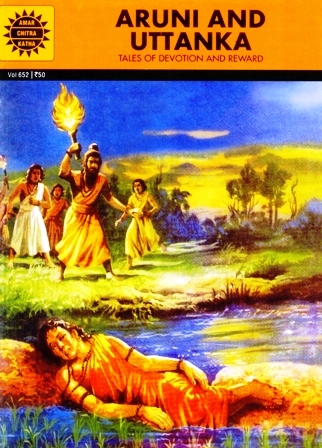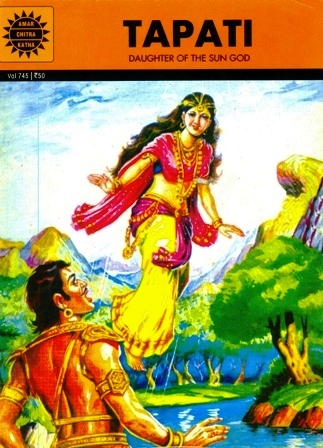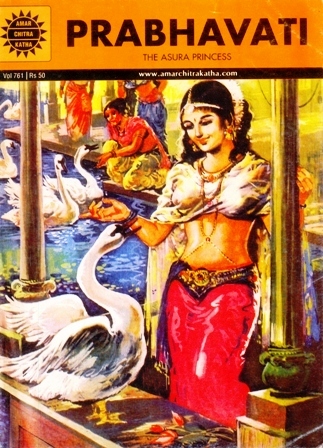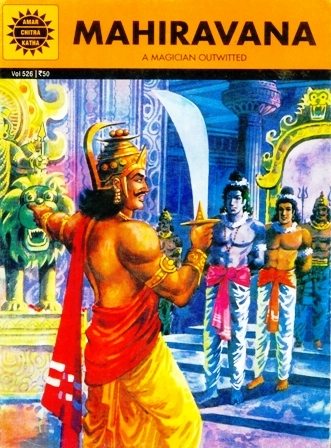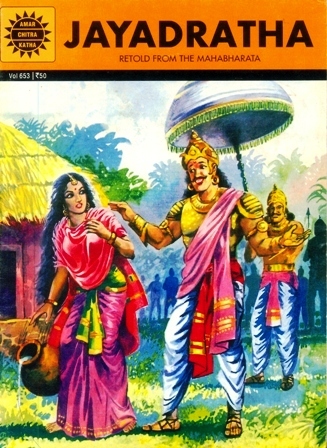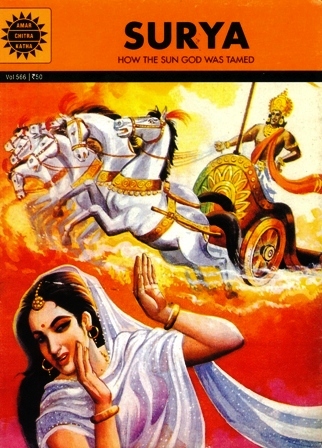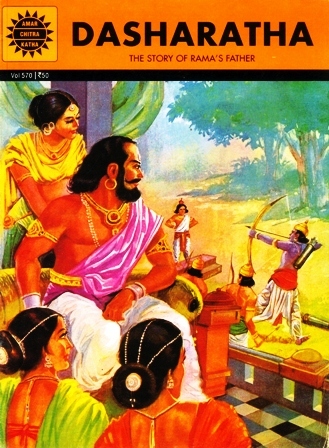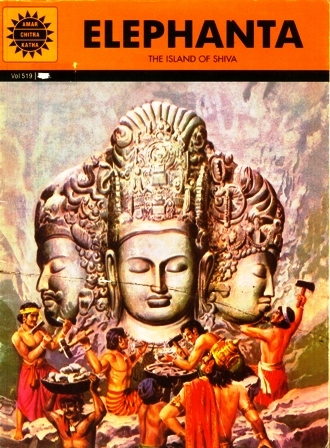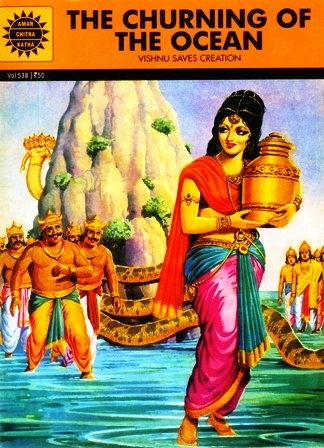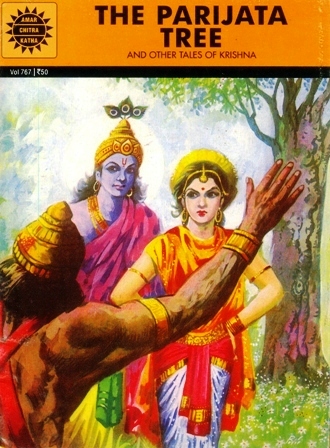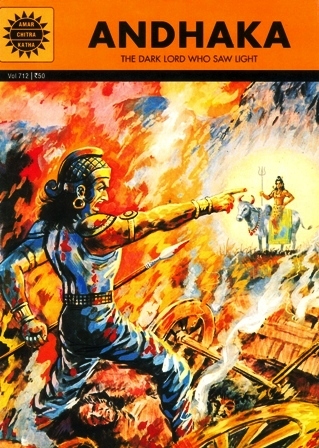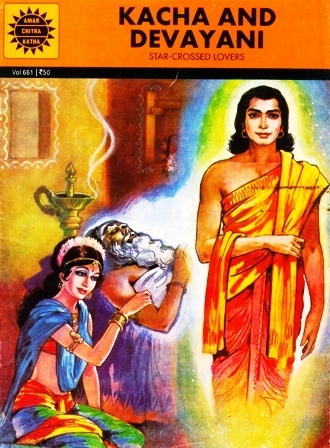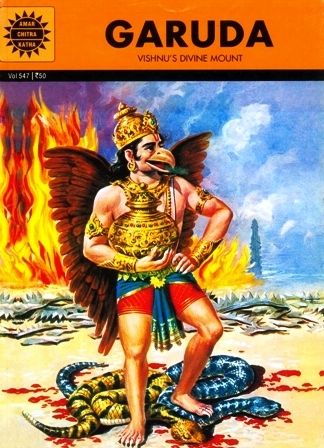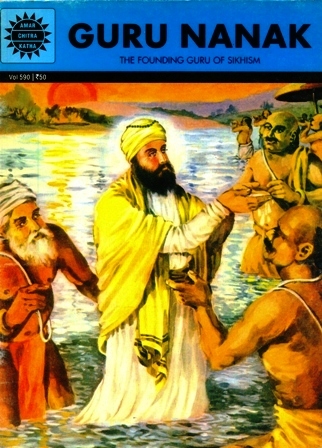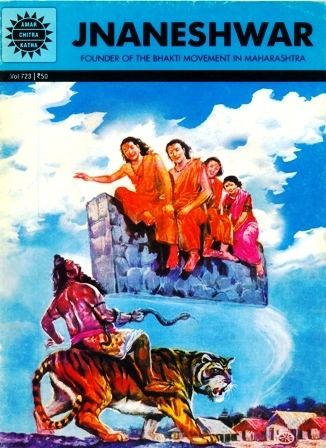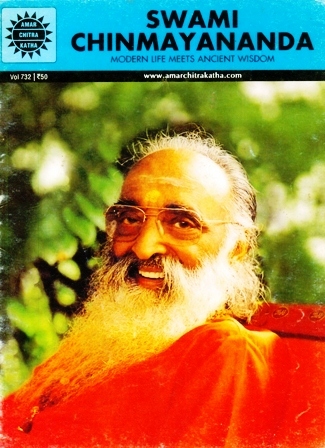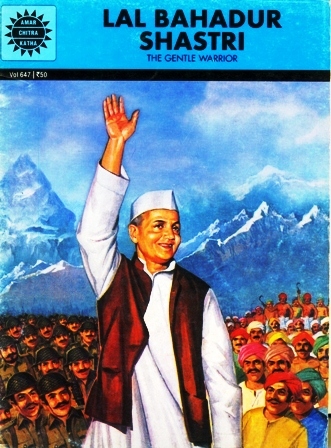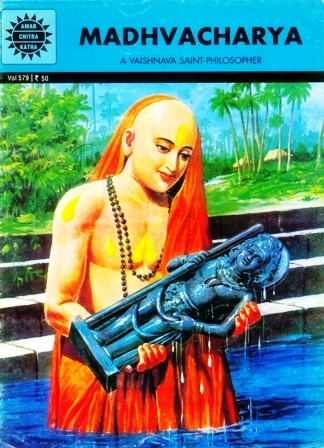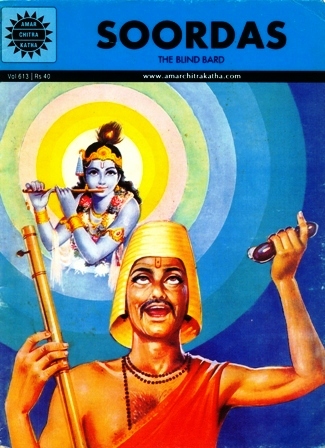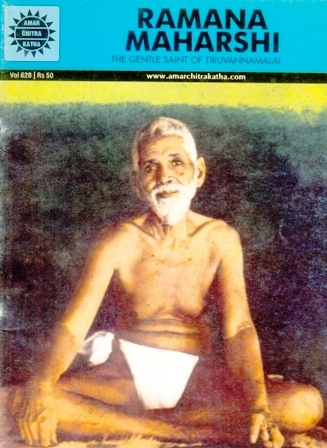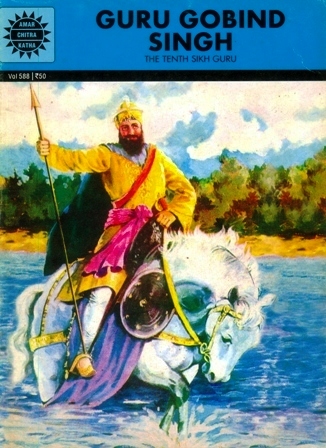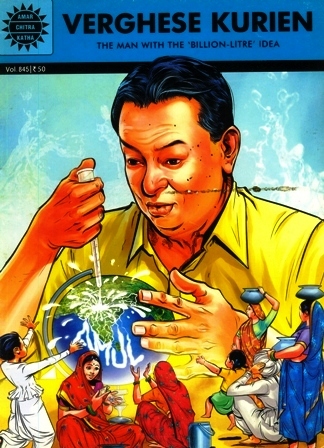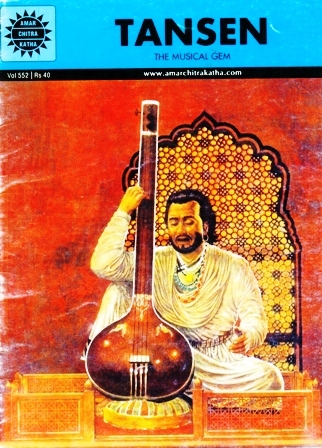-
Aruni And Uttanka
Aruni was willing to give up his life for his Guru; Uttanka cast aside his dreams fo rhis teacher. Young or old, their devotion and obedience were almost superhuman. Luckily, as described in the Mahabharata, the gods looked kindly on them. After all, these young men had earned the right to happiness.
-
Tapati
Tapati, the daughter of Surya, catches the site of the mortal Samvarana and falls in love with him. She appears before him in the forest and he is so enchanted by her, he swoons and falls on the ground. Tapati and Samvarana had a son named Kuru, the ancestors of the Pandavas and the Kauravas. The field of Kurukshetra upon which the battle takes place is also named after Kuru.
-
Prabhavati
The demon, Vajranabha, performs severe penance. Pleased, Brahma grants him the city of Vajra, and says that not even air will enter the city, unless Vajranabha wants it to. Now, powerful in his impregnable city, Vajranabha turns his sights on Indra's kingdom. Indra goes to Krishna for help. What Vajranabha does not realise is that his daughter, Prabhavati, has set her heart on marrying Pradyumna, the son of Krishna.
-
Mahiravana
When his rakshasa army was destroyed in the battle against Rama, the prince of Ayodhya, Ravana, the Lord of Lanka, called for his son Mahiravana, a powerful magician. Would he succeed in killing the noble Rama and Lakshmana? Not while Hanuman was around, for this faithful friend had a trick or two of his own. The Bengali "Krittivasa Ramayana" written by poet Krittivasa in the 15th century describes how Hanuman manages to get around the wily sorcerer's schemes.
-
Jayadratha
Jayadratha was a despicable man - vindictive, arrogant and selfish. In the Mahabharata battle, Jayadratha had shamelessly hidden himself away, for Arjuna had taken a terrible vow to put an end to his own life if he failed to kill the villain before sunset that day. With the wise Krishna by his side, would the mighty Arjuna fail to find his mark?
-
Elephanta
Lord Shiva, it is believed, has many faces and multiple forms and each tells a tale. Visitors to an emerald-green island off the coast of Mumbai are reminded of these dramatic episodes by the work of skilful, dedicated sculptors, who lived more than 1,300 years ago! Their carvings have survived in the caves of Elephanta, despite the ravages of time and vandals and destroying armies.
-
The Churning Of The Ocean
The three worlds of the universe were reeling from shock: the asuras had taken control! Even the plants were withering away. Only the great Lord Vishnu could make things right again. He got both devas and asuras to churn up life-giving nectar from the ocean of milk and then ensured that the asuras were kept away from this gift of immortality.
-
Ghatotkacha
He may have looked like a demon, but Ghatotkacha was a guardian angel - always ready to help, always cheerful. The Pandava brother, Bheema, was lucky to have him as a son, for he saved his life more than once. And if it were not for this brave young rakshasa, the Kauravas may well have been the victors of the famous battle of Mahabharata.
-
The Parijata Tree
When Satyabhama, Krishna's fiery wife, gets offended by the behaviour of Indra's wife Sachi, the two gods come to war over the lovely Parijata tree. The princess Lakshmana is determined to marry Krishna. Her father must ensure that during the swayamwara only Krishna will win his daughter. Sage Narada provokes Satyabhama into agreeing to give him Krishna, unless she can find something heavier than him. But all her possessions together prove to be lighter than Krishna.
-
Kacha And Devayani
While the war was raging between the devas and asuras, the devas sent Kacha to the preceptor of the asuras. Kacha approached the asura guru as a student. It was in this background of hate, war and rivalry that the beautiful Devayani, the proud daughter, of the asura guru, fell in love with Kacha, the man who was being watched by the asuras with increasing suspicion - they knew Kacha was seeking the key to immortality from their guru. Then a twist in the tale throws the dreams of the young couple into dissarray.
-
Jnaneshwar
t was predicted by a sage that the children of Vithal and Rukmini would be great spiritual leaders. But of their four children it was little Jnanadev who seemed to have a special inclination for the scriptures. In his brief life as a preacher Jnaneshwar, as he was called later, spread the message of Bhagwat Dharma or love of God and brotherhood of man. He was the founder of the Bhakti movement in Maharashtra. Jnaneshwar renounced the world at the age of twenty-one.
-
Swami Chinmayananda
Nurtured on modern learning and ancient wisdom as a child, he taught himself to meditate even as he dreamed of dinner, skipped out of family visits to the temple but spent hours in solitary prayer and campaigned for indias freedom while aiming for a masters degree in english literature chinmaya means true knowledge and it is what swami chinmayananda taught the world.
-
Lal Bahadur Shastri
Lal Bahadur Shastri may have been small in size but he had an immense vision. Determined to build a new India, he took on every challenge with a cheerful smile and a humble heart. Years of hard work took their toll, however. In her moment of triumph, the country was suddenly left grieving for a wise, honest and courageous prime minister.
-
Soordas
Just because the boy was blind, he became the butt of every unkind prank. Little did his family realize that Soordas could often see more than anyone else. He could direct a shepherd to his lost goat and a father to his missing son. He could describe exactly how the idol of his beloved Lord Krishna was dressed in the temple each day. The Mughal emperor Akbar personally came to invite him to his court. The poet Tulsidas visited him. The powerful, the wise and the ordinary flocked to him for his all-seeing wisdom and his soul-stirring songs of devotion.
-
Verghese Kurien
When Verghese Kurien stepped down from the train and on to the dusty platform in Anand, Gujarat, on 13 May, 1949, little did he know that his life was going to change unimaginably. Waiting for him was not just his own destiny but that of thousands of small, marginalised farmers who, until then, had only known exploitation and deprivation. The story of Dr. Kurien is the story of Amul. It is the story of Operation Flood, the 'billion-liter idea' that set India on the top of the world map for milk production. A die-hard patriot, Kurien was committed to the co-operative cause. He put the milk industry in the hands of the farmers, believing firmly that with ownership would come responsibility and great success. And he was right. Amar Chitra Katha traces the story of the man who is known as the 'Father of the White Revolution'
-
Tansen
From imitating animal sounds to igniting a fire with his song, Tansen's genius was unmatched. His voice was so much in demand that wily patrons used it to gain political advantage. Such a talent could win loyal friends and a beautiful wife, but it could also make others viciously jealous. In Emperor Akbar's court, he was a jewel more precious than the diamonds and pearls that were showered on him and he remains to this day a shining symbol of classical Indian music.

